The Intel SSD 320 Review: 25nm G3 is Finally Here
by Anand Lal Shimpi on March 28, 2011 11:08 AM EST- Posted in
- IT Computing
- Storage
- SSDs
- Intel
- Intel SSD 320
It's called the Intel SSD 320, but the part number should give away just what we're looking at here:
This is the long awaited third generation Intel based SSD. This is the G3. And at this point it's around 6 months late.
Back then it was simply called the Postville Refresh on Intel's roadmaps (Postville was the 34nm Intel X25-M G2). It would use 25nm Intel NAND, feature improved performance and full disk encryption - all behind a 3Gbps SATA interface.
When I spoke with Intel about the drive last year, all indications pointed to it being faster than drives based on SandForce's SF-1200 controller. And it is:
| Intel SSD 320 300GB vs. Corsair Force F120 | ||||
| AT Storage Bench 2011 (Heavy) | AT Storage Bench 2011 (Light) | |||
| Corsair Force F120 | 120.1 MB/s | 155.9 MB/s | ||
| Intel SSD 320 300GB | 132.8 MB/s | 161.7 MB/s | ||
Without turning to any real time compression/deduplication techniques, Intel has built a drive that's faster than the SF-1200. You also get that famed Intel SSD reliability:
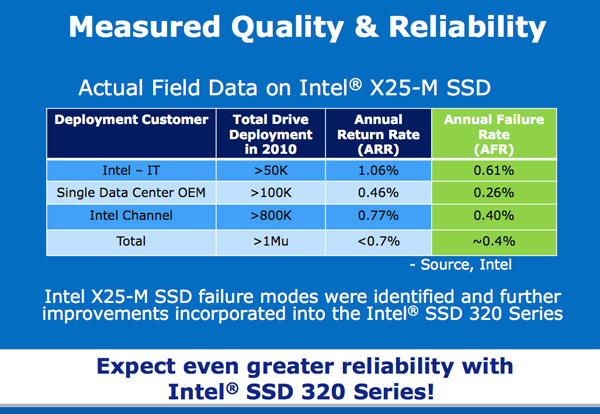
There's just one issue. The SF-1200 was the king of 2010. This year is shaping up to be all about the SF-2200 and the G3 isn't quite as competitive there. Intel realized this as well and thus we got the Intel SSD 510 to address the high performance market. Intel claims the 510 should have the same failure rate as the 34nm X25-M G2 at ~0.6% per year.
The Intel SSD 320 by comparison is aimed at the mainstream market. Remember that's what the M in X25-M always stood for to begin with. As a result we get lower pricing:
| Intel SSD Comparison | ||||||||||||
| X25-M G2 160GB | Intel SSD 320 40GB | Intel SSD 320 80GB | Intel SSD 320 120GB | Intel SSD 320 160GB | Intel SSD 320 300GB | Intel SSD 320 600GB | SSD 510 120GB | SSD 510 250GB | ||||
| User Capacity | 149GB | 37GB | 74GB | 111GB | 149GB | 279GB | 558GB | 111GB | 232GB | |||
| Random Read Performance | Up to 35K IOPS | Up to 30K IOPS | Up to 38K IOPS | Up to 38K IOPS | Up to 39K IOPS | Up to 39.5K IOPS | Up to 39.5K IOPS | Up to 20K IOPS | Up to 20K IOPS | |||
| Random Write Performance | Up to 8.6K IOPS | Up to 3.7K IOPS | Up to 10K IOPS | Up to 14K IOPS | Up to 21K IOPS | Up to 23K IOPS | Up to 23K IOPS | Up to 8K IOPS | Up to 8K IOPS | |||
| Sequential Read Performance | Up to 250MB/s | Up to 200MB/s | Up to 270MB/s | Up to 400MB/s (6Gbps) | Up to 500MB/s (6Gbps) | |||||||
| Sequential Write Performance | Up to 100MB/s | Up to 45MB/s | Up to 90MB/s | Up to 130MB/s | Up to 165MB/s | Up to 205MB/s | Up to 220MB/s | Up to 210MB/s (6Gbps) | Up to 315MB/s (6Gbps) | |||
| Price | $404 | $89 | $159 | $209 | $289 | $529 | $1069 | $284 | $584 | |||
It's still early in the 25nm ramp, but the 25nm Intel SSD 320 is cheaper than the 34nm Intel SSD 510. The only issue is that OCZ is very competitive with its pricing as well and compared to the Vertex 2, Intel's SSD 320 isn't really any cheaper. Intel likes to maintain its 65% profit margins so even though it makes the NAND and the controller in the 320, we're unlikely to see these drives drop below competitive pricing.
Intel expects the 25nm SSD 320 to be even more reliable than the 510 or X25-M.
The Same Controller
The Intel SSD 320, like the 310 and X25-M before it, uses an Intel branded controller. Opening up the 320 reveals a near identical controller to what we saw in the 34nm X25-M G2 housing:
You'll notice the part number is identical to 2009's X25-M G2 controller. In fact, it's the same controller. Apparently the G2 controller had a number of features on-die, but not implemented in firmware. Things like full disk encryption and NAND redundancy never made it out in G2 but are here in the 320 all thanks to new firmware. And no, G2 owners aren't getting it.
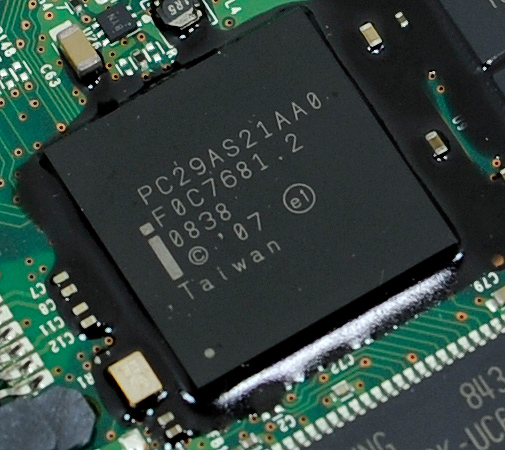
Intel's X25-M G1 Controller
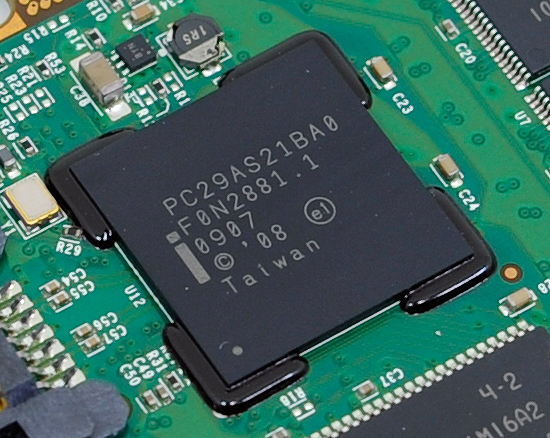
Intel's X25-M G2 Controller
Since the controller hasn't changed, the basic architecture of the SSD hasn't changed either. Intel still doesn't store any user data in its external DRAM cache and there's still a 256KB on-die SRAM.
Next to the Intel controller is a 64MB 166MHz SDRAM device, now made by Hynix. You'll notice that the DRAM chip is a lot smaller than what we've seen in previous X25-M generations, despite growing in capacity. Intel actually turned to mobile SDRAM for use in the SSD 320 to help save on power. While the X25-M G1 and G2 both used a conventional 3.3V SDRAM device, Intel moved to a 1.8V mobile SDRAM chip with the 320.
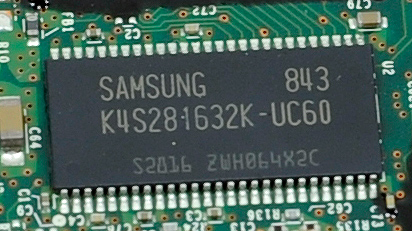
Intel X25-M G1: 16MB 166MHz SDRAM
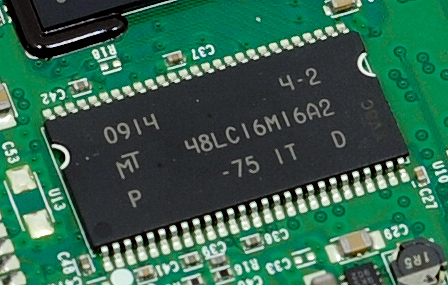
Intel X25-M G2: 32MB 133MHz SDRAM
Intel always prided itself on not storing any user data in its DRAM cache. The external DRAM is only used to cache mapping tables and serve as the controller's scratchpad. In the event of a sudden loss of power, Intel only has to commit whatever data it has in its SRAM to NAND. To minimize the amount of data loss in the event of a sudden power failure, Intel outfitted the SSD 320 with an array of six 470µF capacitors in parallel.
We've seen large capacitors on SSDs before, primarily the enterprise SandForce drives that boast a 0.09F supercap. Intel claims that for its design a single large capacitor isn't necessary given the minimal amount of data that's cached. It further claims that an array of multiple capacitors in parallel allows for much better reliability - if one capacitor fails the array is still useful (vs. a single point of failure in the case of the supercap).



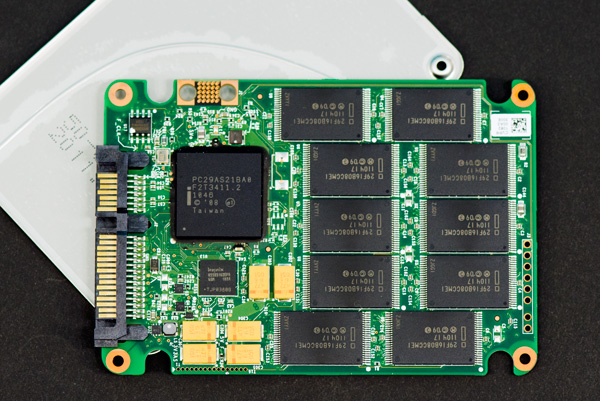
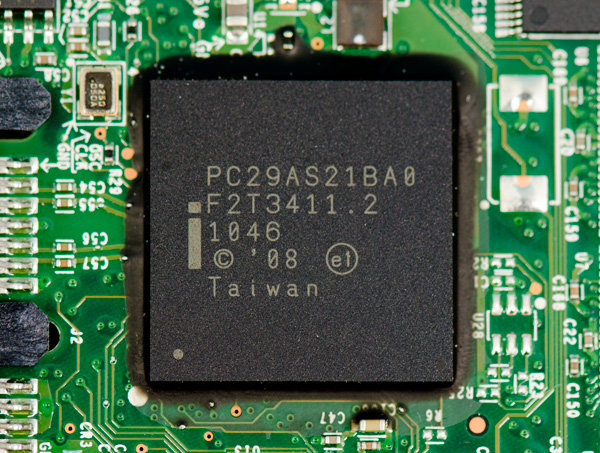
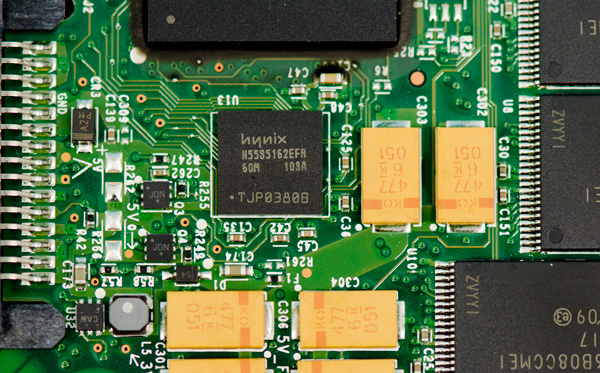









194 Comments
View All Comments
LeTiger - Monday, March 28, 2011 - link
If Intel's not careful... they will price and performance themselves out of the very market they sought to create in the first place...nexox - Monday, March 28, 2011 - link
Meh, this is the cheapest SSD with some form of capacitor backup for volatile data - to get something similar you need to go to a SandForce 1500 or 2500 controller, and probably expect to pay 2-3x as much. Most people aren't too concerned with this, but it's an essential feature, no matter what the manufacturers say.It's also the only SSD I've seen that doesn't exhibit random latency spikes, that combined with the power fail protection means that it's the only SSD I'd consider buying.
cactusdog - Tuesday, March 29, 2011 - link
At least with Intel you are guaranteed to get best quality nand and reliable performance over the long term. Intel have also done the right thing by rebranding 25nm drives, even though in Intel's case performance is a little better than their 34nm drives.With OCZ, theres no way of knowing which nand you will get and you could end up with second rate nand not intended for high performance SSD's.
Intel's performance is very reliable over the long term, whereas OCZ/sandforce 3GB/s drives are known to slow to a "settled state" especially with smaller drives.
Intel will sell plenty of these drives because they are reliable and trustworthy.
Griswold - Tuesday, March 29, 2011 - link
Exactly. Not everybody plays benchmarks all day long and doesnt care one bit about reliability of the storage system.wumpus - Tuesday, March 29, 2011 - link
And just how many filesystems automatically write everything the instant write() is called? It is a bad idea for rotating media, and will take awhile before filesystems optimized for SSDs show up (Microsoft has been promising a database centric filesystem for the "next windows" since NT was new. Maybe someday.) Also, NTFS has corruption issues with standard hard drives, this isn't going to help that reliability much anyway. You need backups, a real UPS, and RAID (in roughly that order) if you care about data reliability.If intel was willing to compete largely on reliability, they could double the price (if data on SRAM competition is even more expensive), as such a feature is worth much more than any amount of hardware cost to a large number of customers. Don't expect to get it without major software surgery (and yes, some of those customers have the software).
seapeople - Tuesday, March 29, 2011 - link
I don't understand all the negative feedback on this drive. For the 90% of us who have 3Gbps SATA, compared to the Vertex 3 this drive is:~25% slower than Vertex 3
~20% cheaper than Vertex 3
Why is that so terrible, the Vertex 3 is an amazing performance feat, and under common mainstream conditions this drive is about equal on a price/performance basis.
Meanwhile, this drive gives us 20% more performance than the g2 generation while being ~20% cheaper. This is far from sad.
dagamer34 - Tuesday, April 5, 2011 - link
Except the MSRP for a 120GB Vertex 3 is cheaper than what an equally sized Intel SSD 320 series drive costs. That's simply laughable. Higher price for worse performance? Throwing up the "reliability" card is a red herring when you consider that the 25nm process is brand new, you don't get to state that for any technology until it's been around on the market for quite some time (otherwise, it's just name recognition only, and that worked so well for Sandy Bridge chipsets).seapeople - Thursday, April 7, 2011 - link
You're on crack. A 120 GB Vertex 3 is listed as 249.99 versus 209.00 for the 120 GB Intel SSD 320.Furthermore, SSD reliability issues generally arise from controller/firmware nuances and bugs, not the new process node. It sounds like the SSD 320 is basically the g2 with new flash and a few features unlocked, so it's reasonable to expect similar controller reliability. Apart from that, basically everyone uses the same flash anyway, so if the Intel drive dies because of the new flash process then so will the Vertex.
andreyu - Thursday, July 21, 2011 - link
1. you're blind or on crack2. you bought a ocz/corsair ssd cause you wanted speed but returned it for problems and now you're mad on intel?
3.so sorry 4 u
120 GB Intel SSD 320 is CHEAPER than 120 GB Vertex 3
TonyB - Monday, March 28, 2011 - link
lol